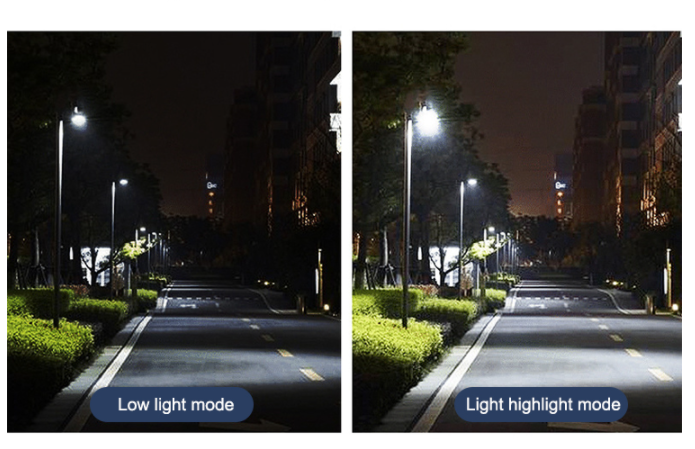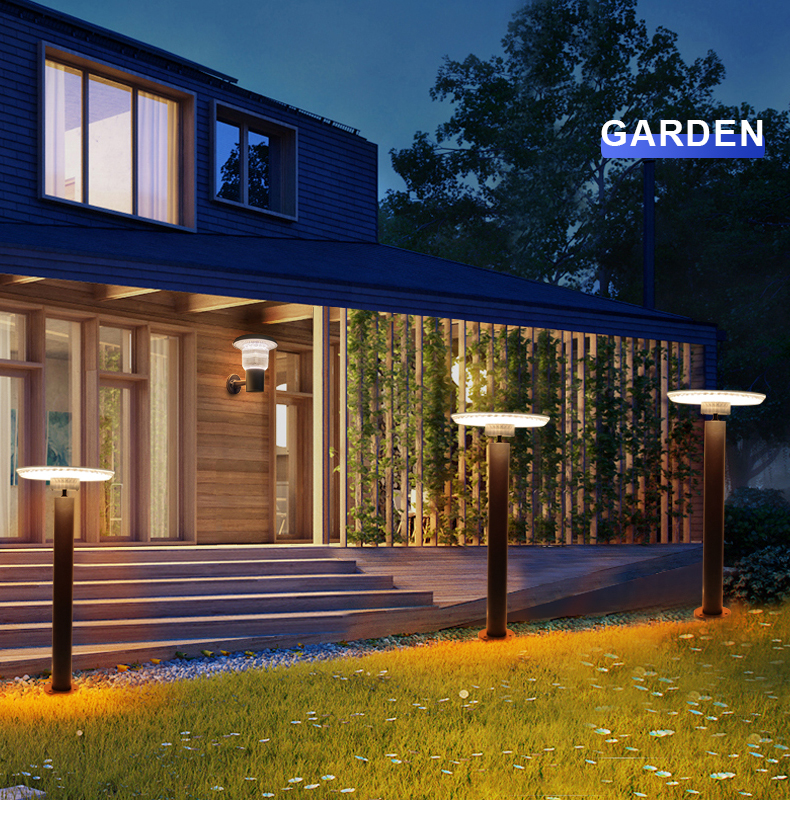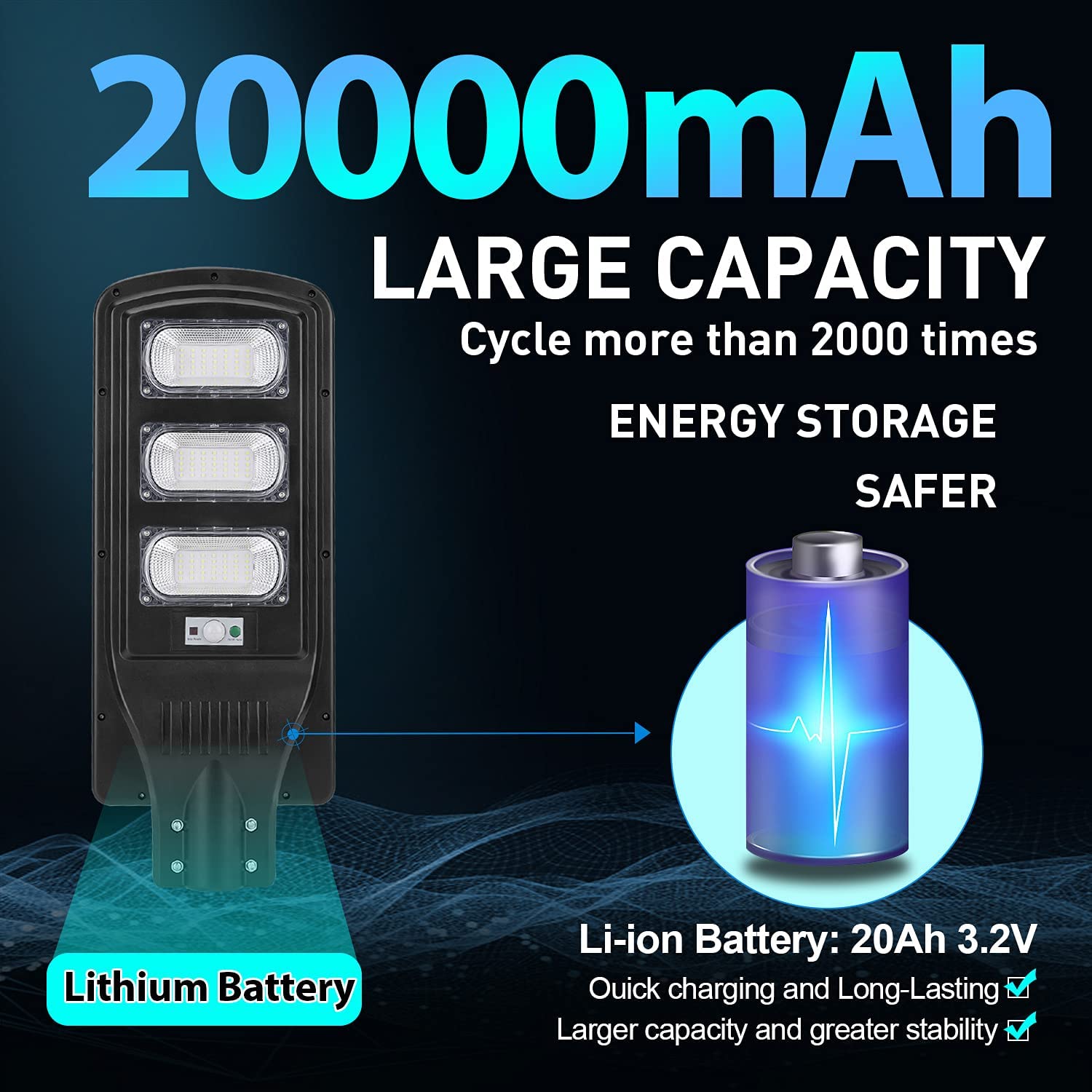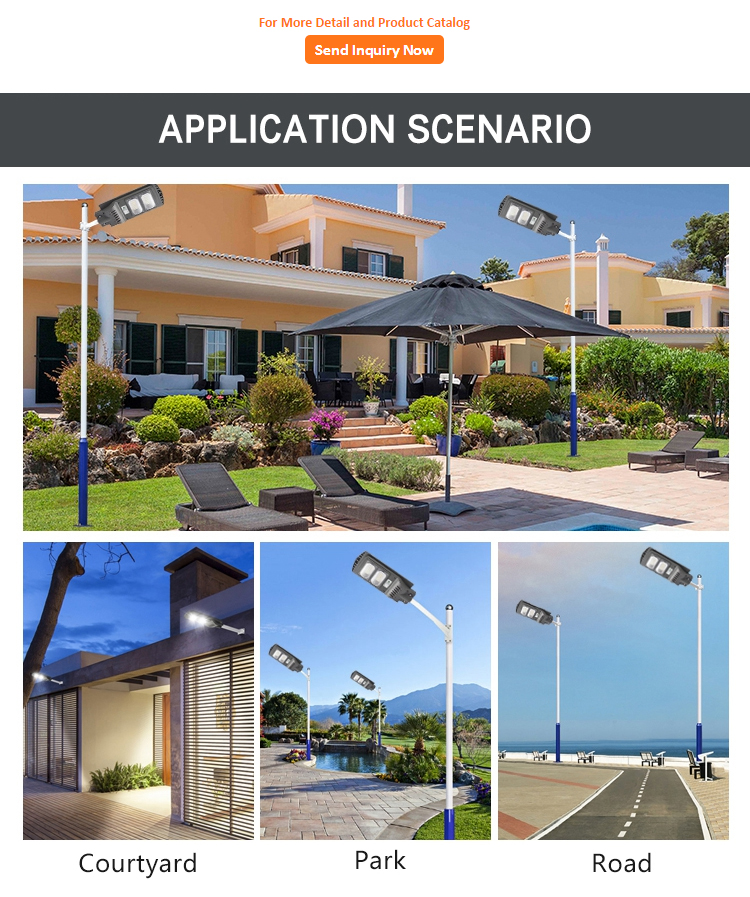why you will choose the solar lights?
Solar lighting systems provide security and illumination in needed areas when grid power is unattainable or costly to bring to a site. Solar lights are a great alternative and a cost-effective solution for projects like this since installation costs are the same. There are also zero costs to trench in the grid power, drop meters, and never any electric bills. Let's go over some of the benefits of choosing solar lighting over traditional grid lights.
Types of Solar Lighting Systems
Complete solar lighting systems range from small one LED fixture at a low wattage to high wattage fixtures that can illuminate areas such as roadways and parking lots.
Small low wattage systems are popular in installations such as a home driveway, walkway, and landscape lighting. Commercial systems are not typically installed in these applications and instead, these lights are purchased at big box stores and online vendors.
Larger lights, such as for roadways and parking lots, are typically manufactured to order. These lights are custom configured to ensure proper operation for the project and to ensure plenty of light coverage. These lights illuminate large areas and have a larger solar power assembly mounted at the top of a pole. No matter what the application, if power is unavailable or cost-prohibitive, solar is definitely the way to go.


Green Alternative
Solar lighting is a green alternative to traditional lighting using no power at all from the grid. This means that they don’t rely on the grid to ensure proper operation, ensuring plenty of light during brown or blackouts.
They also use one of the world’s leading renewable energy technologies. Solar engery is coming down in costs more and more each year, now making it one of the cheapest renewable energy resources on the market today.
Off-grid solar panels feed the batteries during the day to make sure there is plenty of power for the nighttime. Once the sun sets, the controller sees that there is no more charge coming from the panels and turns on the light fixture. The batteries operate the light fixture for a set time specified by the user during the development phase.
These batteries are completely recyclable and can be turned back in during the maintenance phase of the system to a battery recycling facility.

Low-Cost Installation
Installation per pole between a grid system installation and off-grid solar is typically the same. The main difference is the fact that there is no reason to trench in traditional grid power as well as there are no meters to install.
Trenching grid power and setting a meter is one of the most costly parts of the installation of a lighting project. There are times where trenching can be even more costly, especially if there are major obstacles in the way, or in installations where the surrounding area is costly to disturb or fix, such as a newly paved parking lot.
Poles are set the same with grid lights as off-grid solar lighting systems. The footers may be larger with the solar lamp as the poles are manufactured to handle the added weight and EPA of the solar power assembly.
There is no underground conduit running from the main power source from pole to pole. All wiring is located at the top of the pole, or on a nearby pole for some installations. The power is also low voltage which makes it much safer for installation and maintenance.
Finally, barriers such as root systems, underground utilities, or other obstacles typically causing issues with standard electric trenching are no longer an issue. You can just set the pole where the light is needed. 
Maintenance Free
The systems are practically maintenance-free, especially since the use of LED fixtures has become more popular with a 20+ year lifespan on LED lights. LEDs have the longest lifespan of all fixtures on the market today.
Unlike traditional AC-powered fixtures, the use of photocells, the second biggest cause for maintenance, has been removed. The solar panel acts as the photocell using the standard controls.
During the day, when the panel is producing a charge, the controller understands that it is day and keeps the fixture off. Once the panel begins to stop producing a charge, the controls realize that it is night and turns on the light fixtures.
The batteries have a five to seven-year life span if properly sized. This means that every five years or so, a battery change, visual check of the panels and fixture, cleaning of any components is recommended.
Solar panels lights are cleaned by the rainfall in the area. If you live in an area with little to no rainfall, cleaning of the panels every year or so may be recommended, but for the most part, the 45° angle of the panels allows for nature to keep them clean.
No other maintenance is required on the systems as all other components have a life span of 15-30+ years.
Zero Energy Bills
Finally, there are no electrical power bills associated with utilizing solar lighting systems as they are completely grid-free. Imagine not having any power bill for your lighting project.
The upfront costs of a commercial system can be intimidating, but the overall savings can easily be shown when compared to the above reasons.
Additional cost comparisons can be shown by working with your solar specialist to see what the cost differences are over time. Doing a comparison of what would be standardly installed and the solar lights over the 25+ year lifespan can show you a big picture overview of the project.
There are also financial incentives to reduce the initial costs of the solar system when dealing with commercial systems, see online at www.dsireusa.org. Tax credits, grants, and other financial incentives are still very popular to have solar installed over traditional grid lights.
How do solar lights work?
The solar cell, also referred to as the photovoltaic, converts the sun's light into the electrical current required for illumination.The solar cell has multiple crystalline silicone layers and chemicals.
These are the elements necessary to create several layers of spaces with positive charges and electrons with a negative charge.
The sun moves into the solar cell, stimulating the negatively charged electrons, pushing them to the spaces with a positive charge.
The spaces with the positive charges transfer the electron stream in the form of electricity. The solar cell's wires send the current to the battery. The battery stores this electricity across the entirety of the day.
Sunlight is no longer converted to energy during the evening hours after the sun has set. In this time, the photoreceptor within the solar light identifies the darkness, triggering the light to turn on. The battery then supplies the necessary electricity for nighttime illumination.
Let's take a quick look at the merits of solar lighting.



















